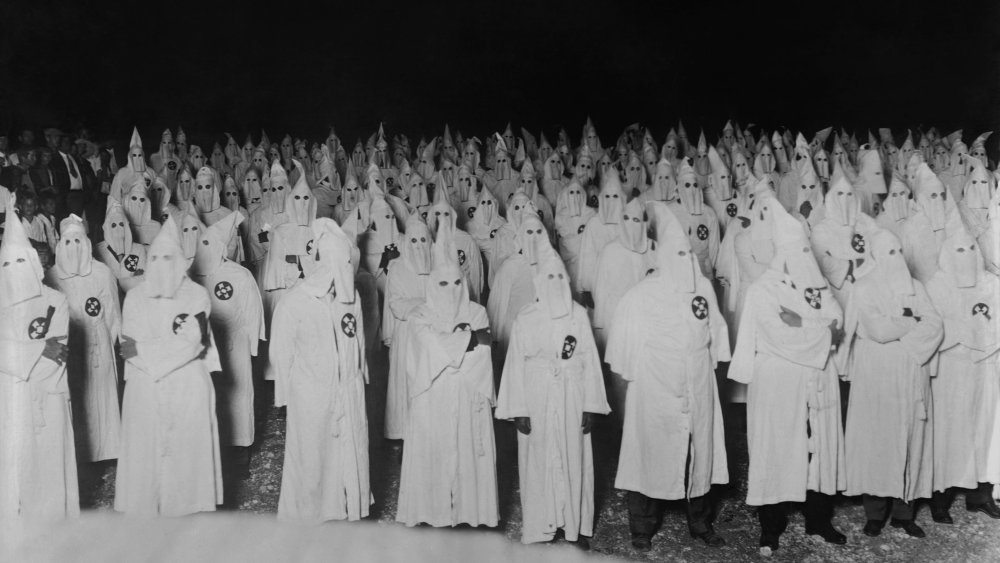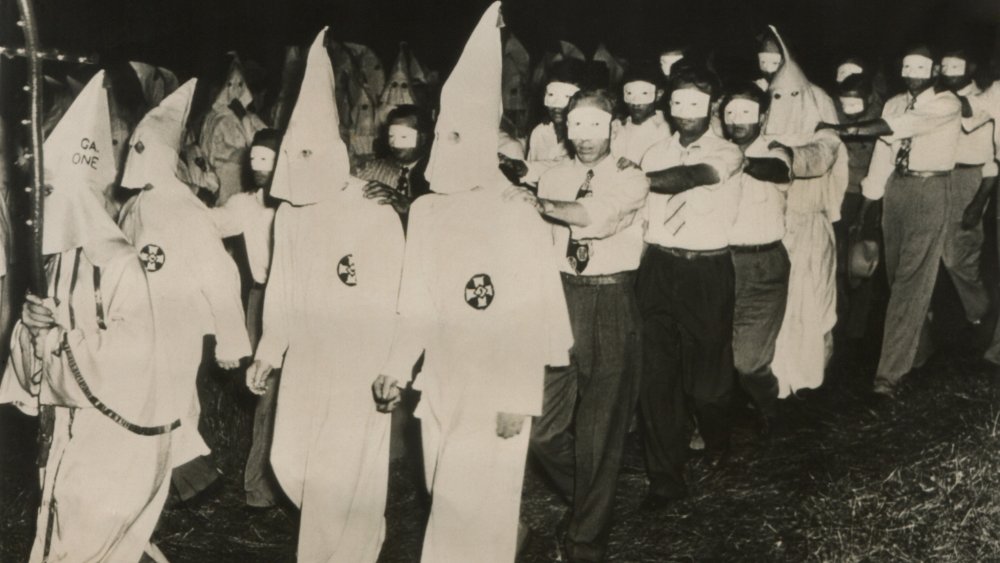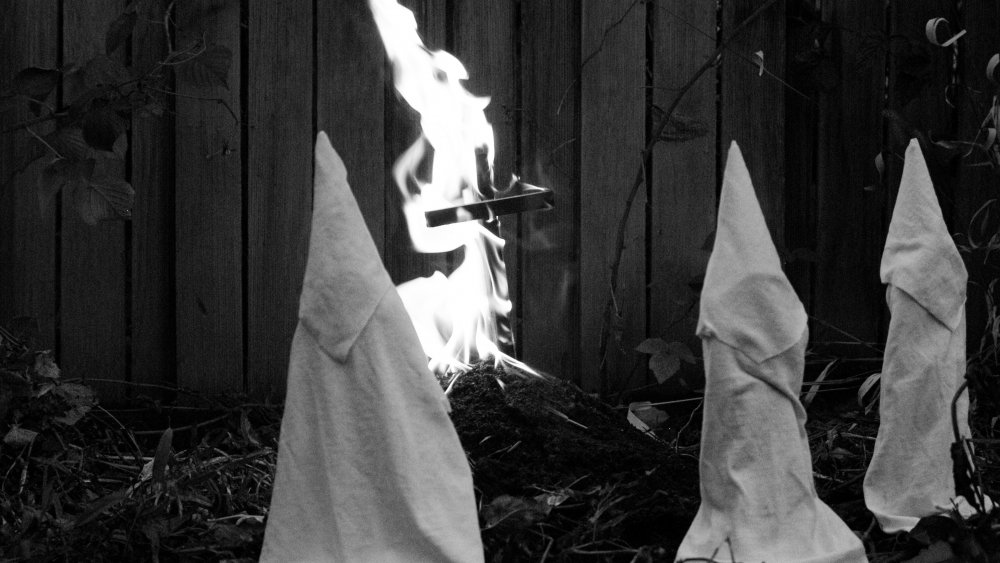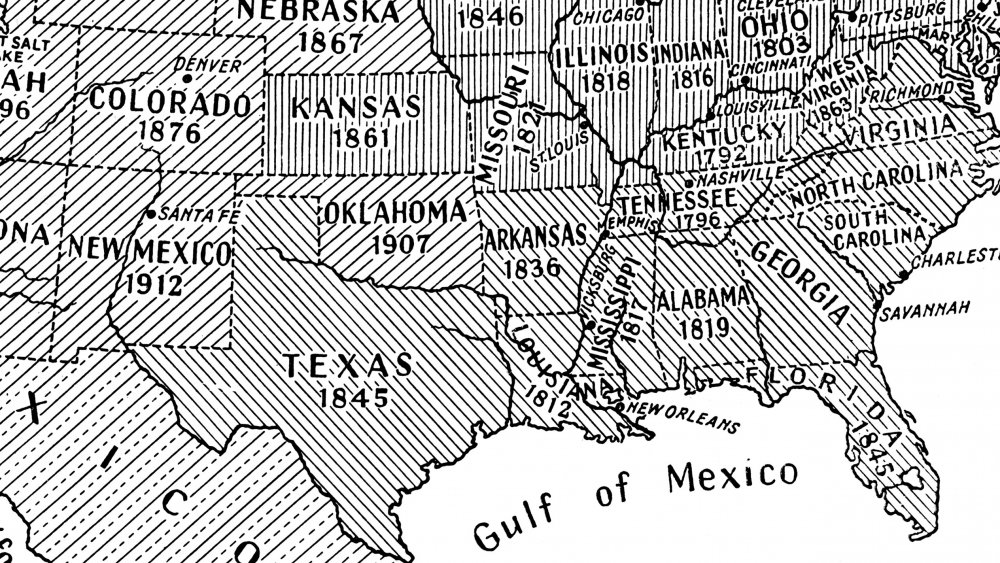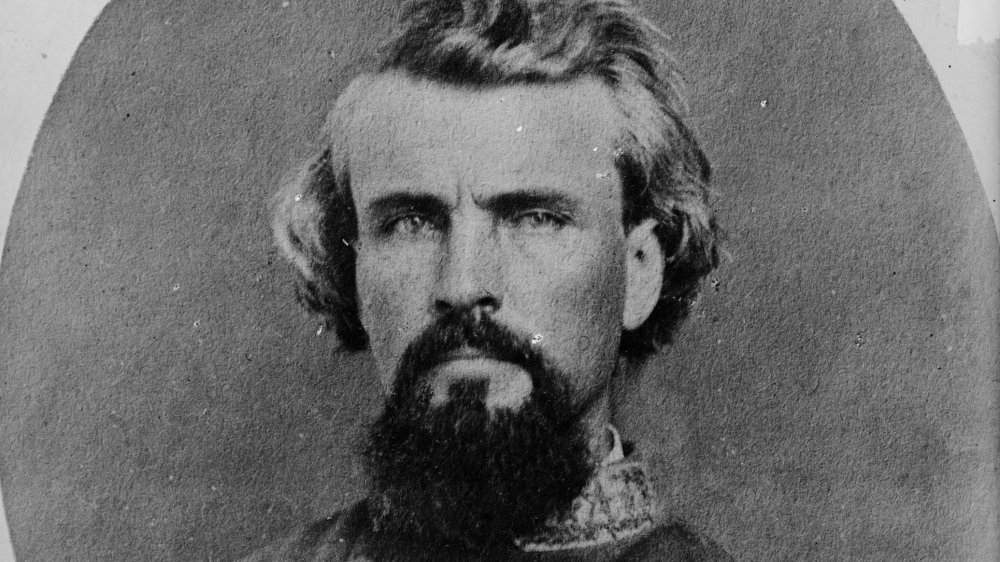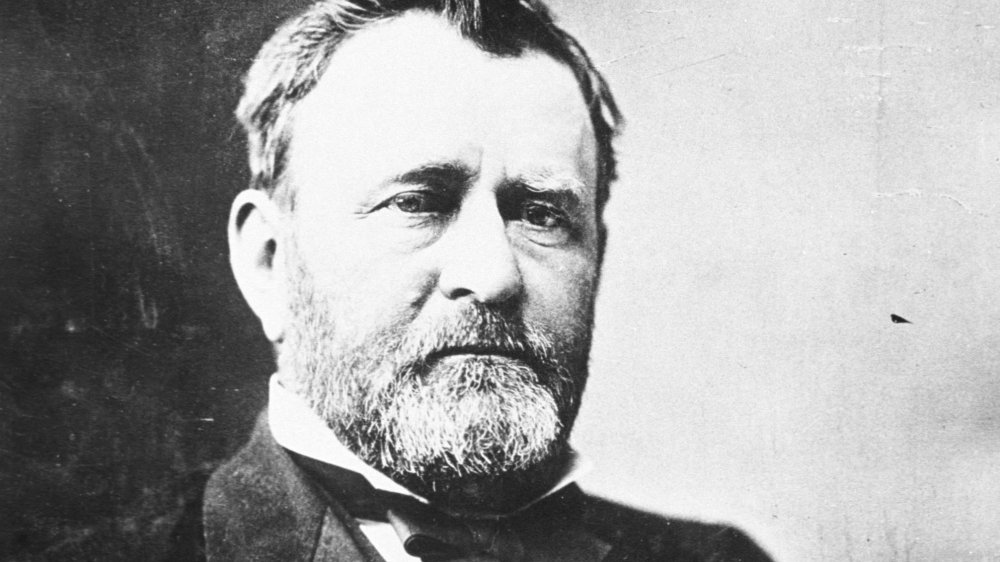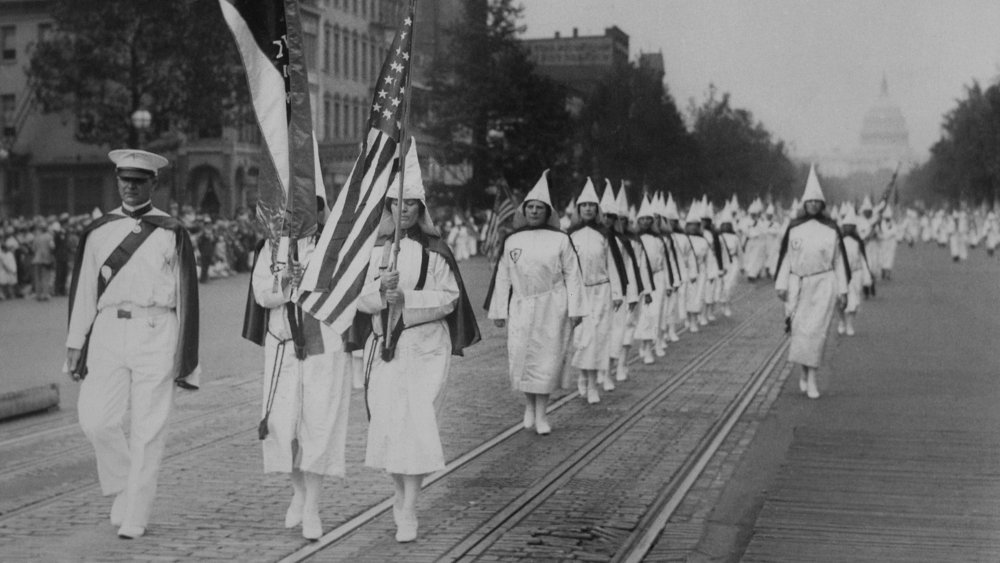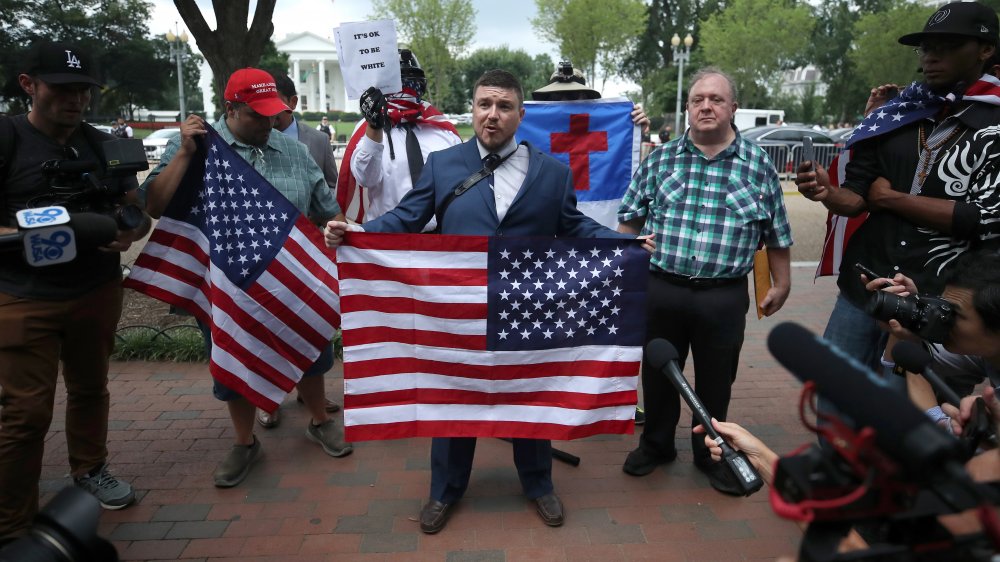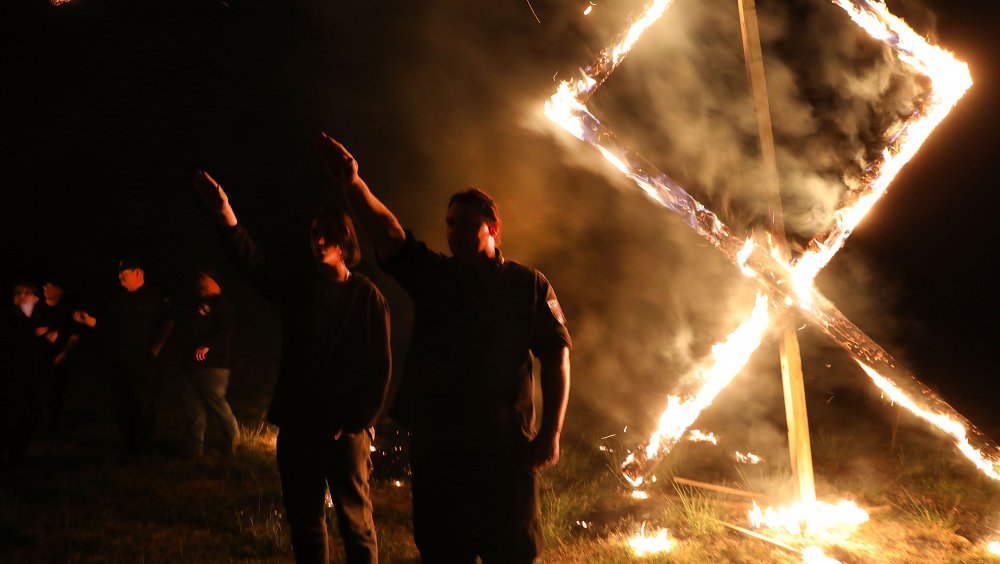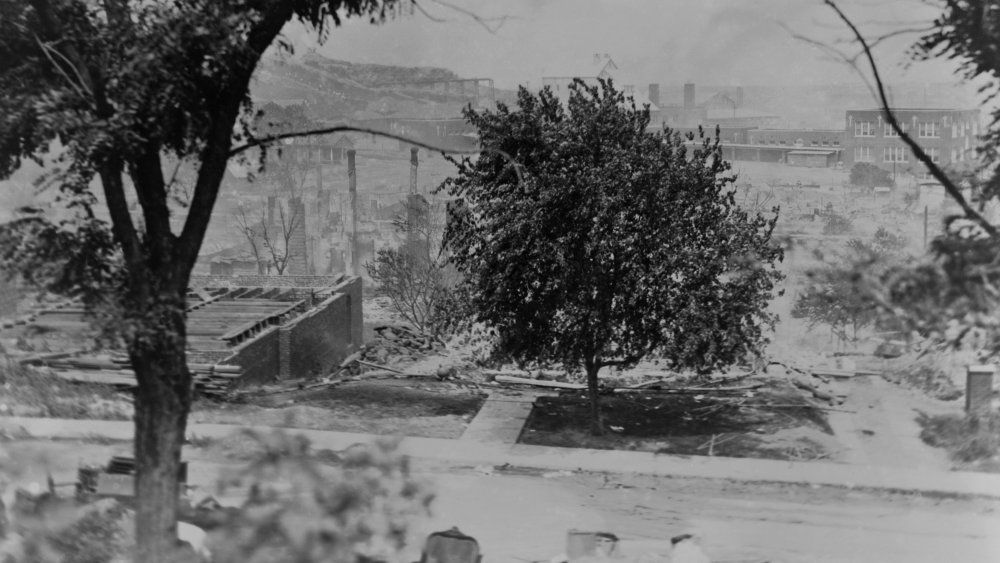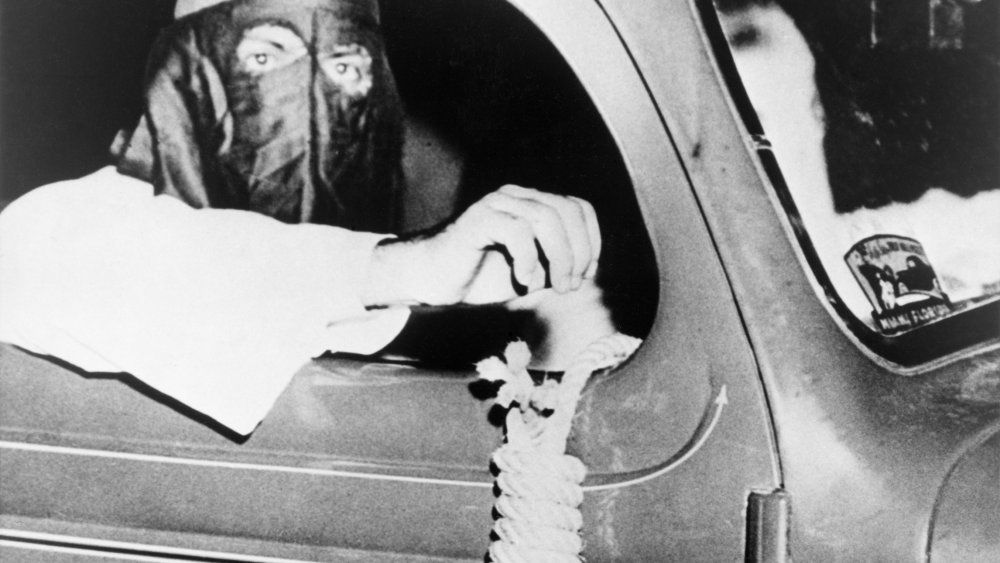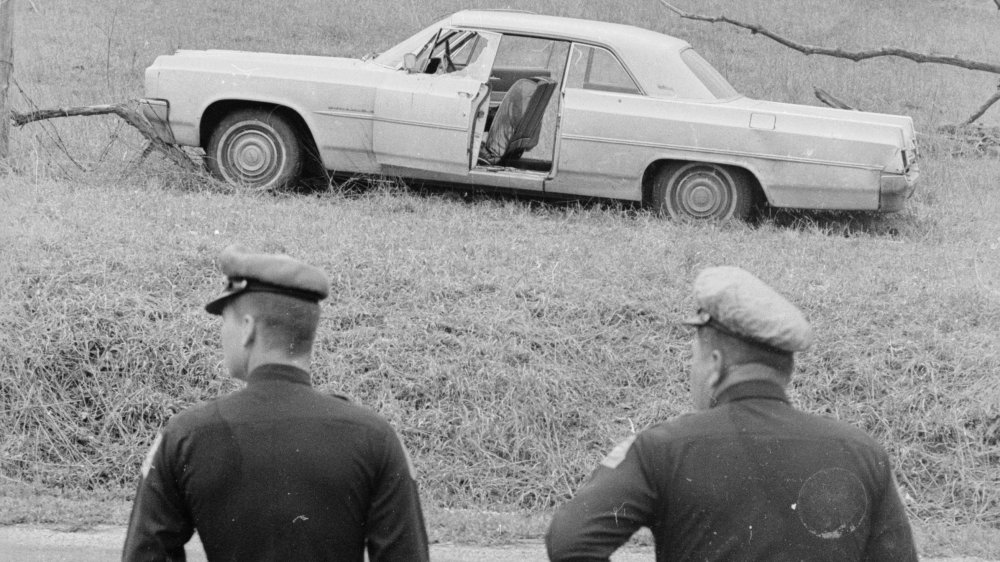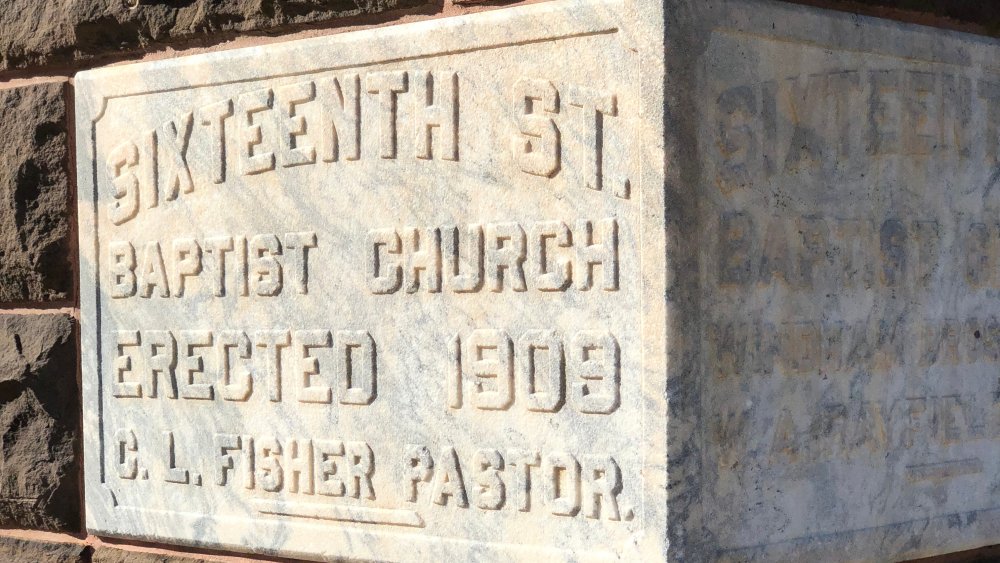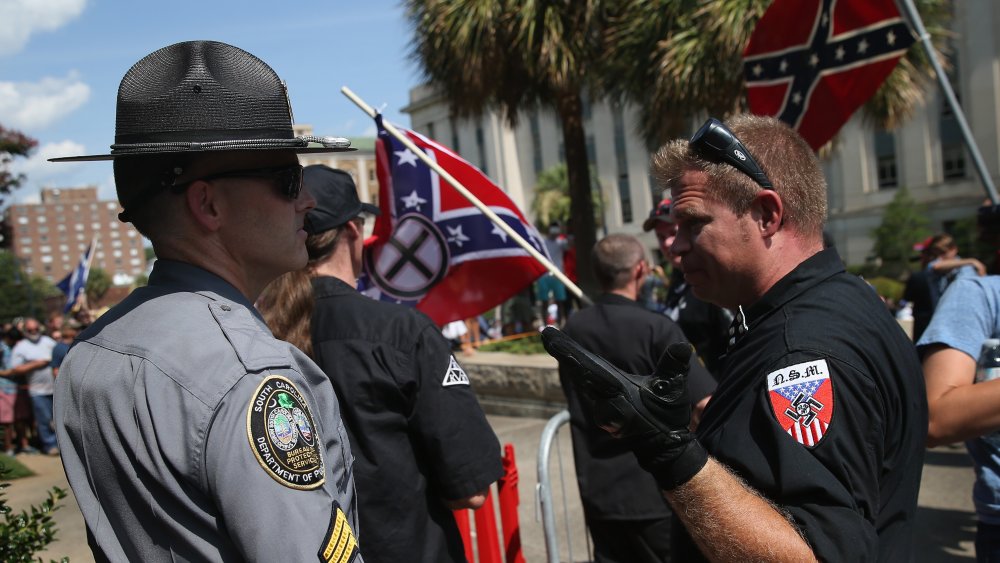The Messed-Up History Of The KKK
It might not be surprising that a white supremacist group as well-known as the Ku Klux Klan has a pretty messed-up history. Their white robes and ghost-like masks carried an air of ominous terror in the South for many years. Even silly names like "grand wizard" lost all of their silliness amid the murder, terror, and destruction this group has caused. Today, the Klan promotes itself as a white purity political group of sorts, but that shouldn't fool anyone. Time has shown what lengths this white supremacist organization will go to in an attempt to keep that "supremacy."
If you thought the KKK was only something of the old Southern past, parading through the streets of the historic South while trying to resurrect the old Confederacy, you'll be dismayed to learn how wrong you are, which is why it's important to remember the messed-up history of this group's hate. Forgetting makes space for a new image they hope to cultivate among the far-right politics of the current age.
The KKK was founded in reaction to the Reconstruction Era
The Civil War had just ended, the Confederacy took a whoopin', and the country was trying to build a better self out of the metaphorical rubble in a period known as the Reconstruction Era. Black Americans were getting rights previously denied to them by their captors. A lot of people liked this, but a lot of white people really, really didn't. So, a group of these angry white former Confederates got together in Pulaski, Tennessee, to form a social club, birthing the Ku Klux Klan in 1866, according to Pacific Standard.
The original social club was presumably a place where these former soldiers could complain about their losses and talk about philosophy — white supremacist philosophy in particular. Due to the nature of their sentiments regarding black people across the South participating in society and politics, the Klan quickly morphed into an organization that terrorized the black community as well as their political rivals, which were Republicans at the time. The South was primarily Democratic. But, this was long ago, when the parties had widely different platforms than they do today. With hindsight in our favor, nobody is really surprised about the direction the Klan decided to take.
The Pulaski Race Riot of 1868
The Pulaski Race Riot occurred in the KKK's birthplace of Pulaski, Tennessee. The conflict started between two men named Calvin, one white and one black, who had an argument while conducting business. White Calvin (Lambeth) responded by kicking Black Calvin (Carter) through the front door, according to Black Past. Half a year later, these two would find themselves at odds again when Lambeth was sleeping with Lucy Reynolds, a black woman. Carter wasn't happy with the situation and threatened to whip Reynolds if she kept seeing Lambeth. Of course, Reynolds told Lambeth about Carter's threat, and Lambeth vowed to kill him.
Lambeth went looking for Carter at a black-owned grocery store, but one of Carter's friends warned him of Lambeth's approach. Lambeth shot at the friend, and the friend shot back. Next, 18 other white men joined Lambeth to stand armed at the store waiting for Carter, who was inside with several other black Americans. Eventually, a white mob gathered, and they shot up the store, killing one and injuring Carter and four others. Lambeth and 17 other white assailants were arrested on $1,500 bonds. During the investigation, it was shown that these men were all members of the Ku Klux Klan.
The KKK spread rapidly through the South
The Ku Klux Klan's initial spread through the South happened in just a few years. They went from a racist social club in small-town Tennessee to a full-blown terrorist organization that called themselves "The Invisible Empire of the South" in less than five years. Their goal? An underground movement to fight Reconstruction and maintain Southern white supremacy.
Two brothers who were part of the Klan's founding owned the Pulaski Citizen newspaper, according to Pacific Standard, which helped the KKK rise in power. In a classic case of "fake it 'til you make it," the brothers weaved together stories that supported the "invisible empire" moniker while writing from both sides. Word of the Klan's existence spread like wildfire. White people from all walks of life who wanted to preserve Confederate ways flocked to the group, starting chapters in every Southern state, and soon, there were squads of KKK through the entire South, terrorizing black communities, killing black Americans and Republicans, and doing everything they could to turn the social and political tide away from Reconstruction efforts.
The rapid spread accounted for some serious political pull. According to the Khan Academy, many Republicans dropped their campaigns altogether due to Klan threats, while the Klan committed voter fraud, securing Democratic victories. The KKK also attacked black businesses to ensure that the economy didn't fall out of white favor.
The first Klan leader was a rich former slave trader
Though not one of the founding members, Nathan Bedford Forrest quickly rose up the ranks of the first Ku Klux Klan to become the organization's original "grand wizard," which is Klan lingo for "leader." Before joining the Klan, Forrest had committed plenty of atrocities on his own. He was a millionaire thanks to a mix of business ventures that included trading livestock and farming cotton, but the majority of his wealth came from selling black people as slaves. According to Britannica, Forrest was among the richest men in the South by the time the Civil War rolled around.
Forrest had a penchant for rising quickly in organizations bent on white supremacy: slave trading, the KKK, and even the Confederate cavalry, from which he'd retire at the rank of lieutenant general. Back when Forrest was just a measly major general, he led his troops against Fort Pillow. The fort was mostly full of African American Union soldiers with a few Confederate deserters and Southern white unionists sprinkled into the mix. Forrest and his troops massacred almost 300 people, many of whom were attempting to surrender.
He ended the war broke and unable to make his fortune back selling people, but he had prestige and was invited to join the KKK. His reputation drew more people to the Klan, but Forrest eventually retired from that life as well to run a prison labor camp (aka legal slavery).
Ulysses S. Grant vs. Horatio Seymour
Ulysses S. Grant won the presidency against Democrat Horatio Seymour in the 1868 election, but the contest was brutal — not brutal as in "close and full of Hulu ads" but rather brutal as in a lot of people died. During the campaign, the KKK increased its activity in an attempt to sway the vote away from the Republicans, according to PBS, hoping that a Democratic president would end the Reconstruction and allow white supremacy to flourish. They had one goal in mind: voter suppression.
It was the first presidential election in which black men were allowed to vote in the South, and that scared the Klan. They burned schools and whipped teachers. They beat, tortured, and murdered Republican voters and party leaders. In Arkansas alone, more than 2,000 people were killed by the Klan and other white supremacist groups. In Louisiana, 1,000 black Americans were murdered to prevent them from voting. Georgia also saw high rates of violence directed at black and Republican voters. The violence and fear worked, obtaining victory for Democrats in those states, but Grant still secured the presidency. Furthermore, the actions of the Klan had turned many whites across the nation against them and started a downward spiral that would prove to be the end of political power for the first KKK.
The KKK died out, only to be revived in the 20th century
The KKK has had two revivals. The first Klan's activity died out almost entirely following the passing of the Ku Klux Klan Act in 1871, with only the occasional incident cropping up in almost 50 years. The act, formally known as the Enforcement Act of 1871, gave President Grant the power to deploy the military and suspend habeas corpus in any former Confederate state trying to deny rights guaranteed to black Americans by the 14th amendment, according to the House of Representatives. The act was deemed unconstitutional by the Supreme Court in 1882, but by then, the KKK had already lost its grip on the South.
The second iteration of the Klan would occur in 1915 and spread throughout the country following World War I as a reaction to high immigration rates and as a movement to maintain "racial purity," according to the Khan Academy. The movie Birth of a Nation's sympathetic portrayal of the Klan is partially blamed for high membership at the time, but the major spread was done with the help of publicity agents Elizabeth Tyler and Edward Young Clarke, whose campaign brought the Klan to its peak of over two million members in 1925, according to The Atlantic.
The Klan would dwindle again in the late 1920s due to education efforts and protests led by the NAACP and outspoken religious leaders, as well as internal turmoil.
The second Klan revival
In the same way the first and second waves of the KKK came about, the third was revived in reaction. This time, it was aimed at the Civil Rights Movement and the end of segregation in the 1960s. The lingering remnants of the Klan unearthed their ugly heads to pray on the fear flowing through white communities now that black Americans were demanding rights they should've had in the first place. This fear was enough to drive many whites to the Klan. The numbers weren't anything like they were during the 1920s, but they gained steadily through the 1980s, according to Timeline.
The KKK loudly proclaimed the Civil Rights Movement as "communist" and a "Jewish conspiracy," trying further to coax the embers of fear. They picked up their usual acts of terrorism — burning black churches, murdering black Americans, and so forth. According to the Law Library, the FBI was aware of many planned Klan attacks but refused to prevent them since it was the height of the Civil Rights Movement and, therefore, the height of effective civil disobedience.
KKK membership would fall again in the '90s, dropping to around 10,000 people nationwide, but the third iteration of the Klan is very much still around. And, according to them, they've been growing rapidly since 2016.
The KKK's mission wasn't solely against black Americans
The KKK's mission of hate has always included more than just black Americans, albeit to a much lesser extent. The KKK of the Reconstruction Era turned their hatred toward sympathizers and Republicans. Granted, it was in regard to the rights being granted to black people.
After their first revival in the '20s, the Klan turned their sights toward immigrants, Jews, communists, LGBTQ+, and, of course, black Americans. Immigrants were pouring onto American soil looking for better lives following World War I, and many white Americans feared a Bolshevik revolution happening at home. Just about anyone the KKK felt might interfere with their "racial purity" was targeted. The idea of white, Protestant "racial purity" also turned them against Catholics since Italian and Irish immigrants came to the East coast.
The third wave of the KKK kept all the targets of the second but relaxed a bit on Catholicism. In truth, though, all of these groups were secondary to the black Americans of the Civil Rights Movement. On a disturbing note, the KKK is projecting a political platform of white supremacy today that includes things like outlawing homosexuality, ending refugee programs, and making the nation a white, Christian one like "it was supposed to be."
The KKK and the Tulsa Race Massacre
The Tulsa Race Massacre occurred in Tulsa, Oklahoma, on May 31, 1921, and killed between 100 and 300 people and caused massive amounts of property damage, mostly affecting the city's black citizens. The riot lasted for more than 12 hours and only stopped after the National Guard was deployed.
The day before the riot began, a Black teenage boy was in an elevator with a white woman. She screamed. He fled. It's still unclear what happened in the elevator, but the teenager, Dick Rowland, was arrested for sexual assault. A white mob showed up at the courthouse and demanded that the police hand Rowland over amid rumors of lynching. The sheriff refused, and 75 armed black men showed up to stand guard for Rowland's protection. These men were swarmed by a mob of 1,500 white men.
Throughout the night, the white mob murdered black Tulsans with nearly zero impunity. The city was heavily segregated, and most of its black citizens lived in a section called Greenwood. The mob burned Greenwood to the ground, destroying and looting 35 city blocks. Some members of the violent mob were deputized officers. Many believe the newly established local branch of the KKK had a hand in the massacre, but it's hard to tell for certain. Nonetheless, the Klan made a point to take advantage of the aftermath to increase their numbers, according to History.
The KKK is directly responsible for multiple murders
It's difficult to come up with any reasonable estimate of how many people the Klan has killed. For one thing, they often worked in secrecy, hence the pillowcases and performing most of their murders under the cloak of night. For another, most murders committed were done so in towns and at times that were sympathetic to the Klan's white supremacist cause, so the murderers were never charged, or the murders were covered up outright. That doesn't mean there isn't a long list of killings that we know were committed at the hands of the KKK, though. They're just more recent than you might expect.
The original wave of the Klan was thought to have lynched over 3,500 black Americans before 1900, according to the Khan Academy. Then, there was the case of the Sixteenth Street Baptist Church bombing, where four young girls were killed in 1963. The next year, a mob of KKK members killed Michael Schwerner, Andrew Goodman, and James Chaney. All three were civil rights workers. Medgar Evers, a civil rights worker and officer for the NAACP, was assassinated outside of his home by a member of the Klan. The list goes on and on, but you get the idea: The Klan kills.
It took the murder of a white woman for the government to imply the KKK was "un-American"
Viola Liuzzo was a white woman who aided the Civil Rights Movement. She traveled from Detroit to participate in the Freedom March and shuttle home the tired, beaten protesters who'd just marched from Selma to Montgomery. Liuzzo was just about done for the night, with only one person left to take home, when she was shot from another car containing three Klansmen.
The murderers weren't charged as such. Murder, unless committed on federal lands, has to be charged at the state level, and the state of Alabama apparently didn't want to charge Liuzzo's killers. President Johnson wasn't having it, so he did what he legally could. The Klansmen were charged with conspiracy to violate civil rights, according to the Roosevelt Institute for American Studies, and Johnson set the House Un-American Activities Committee to investigate the Klan. The committee was created to investigate public enemies, and by investigating the Klan, the KKK was implied to be "un-American" for the first time in history.
Notably, being that it was one of the first Klan-related murders where someone was charged and convicted, this case showed how race made a difference in whether or not a killer was convicted.
The 16th Street Baptist Church Bombing
On September 15, 1963, a bomb went off inside the 16th Street Baptist Church in Birmingham, Alabama, during Sunday service. Five young girls were in the basement, waiting to participate in Youth Day. Four of them were killed: Addie Mae Collins, Denise McNair, Carole Robertson, and Cynthia Wesley. Sarah Collins, Addie Mae's sister, lost an eye to flying debris. There were at least 13 others injured, according to CNN.
Black churches have always been a target for the KKK. This one was picked in particular because it was a large, important location for Birmingham's black community and was used for civil rights meetings, according to the National Park Service. After the bombing, riots broke out, and two black boys were killed.
The case closed in 1968 ... with no charges. In 1971, the case was reopened, and one murderer was convicted in 1977. Two more bombers weren't charged until the early 2000s, but both were convicted. All three were Klan members.
There have been ties between the police and the KKK since it began
When you look through the KKK's history, a common theme emerges. Often, the police are either helping the Klan accomplish a terrible goal, or the Klan has infiltrated the police. According to an FBI report from 2006, it's part of white supremacist history for groups like the Klan to infiltrate police departments and to recruit from law enforcement into their ranks. The report also states that the KKK in particular has close ties with law enforcement in the communities in which they operate.
Outside of the FBI report, we find other isolated cases of police ties to the Klan. In 2019, a Michigan police officer was fired after applying for KKK membership. Deputy Sheriff Cecil Price, who helped orchestrate the murders of Michael Schwerner, Andrew Goodman, and James Chaney in 1964, was also discovered to be a member of the Klan. According to The Guardian, it was common for police to leave the cells of black Americans unlocked so Klansmen could have their way with them. In 1866, policemen joined a riot in Memphis, Tennessee, that killed 46 people. However far back you look, the police and the KKK seem to be intertwined.
